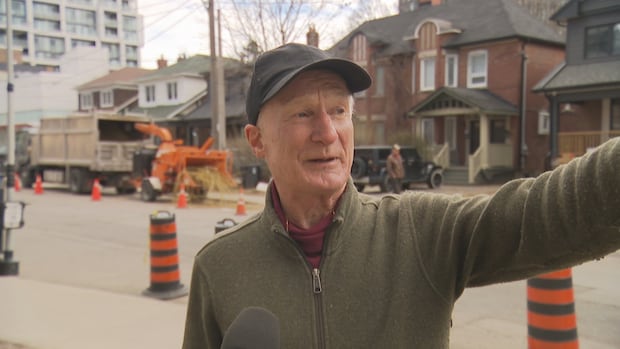
""It's a magnificent tree; it's been around a lot longer than most of these houses," said Betts. "It provides habitat for birds, animals and it soaks up the groundwater that comes through this area.""
""After an on-site inspection of the willow tree at 45 Berwick Avenue, (the city) issued an order...for its removal as the deteriorating state of this tree could present a safety issue for the property owner or the public in the nearby area," city spokesperson Shane Gerard told CBC Toronto in an email."
"Andrew Vernon-Betts, a 35-year resident of Berwick Avenue, says the tree was the last of the big willow trees in his neighborhood. He says as the homes have disappeared, so have the trees."
"A block south of Eglinton Avenue and running west off Yonge Street, Berwick Avenue is at the heart of an ambitious redevelopment plan, approved by the province in 2019, that promises a much busier neighbourhood marked by tall buildings and an intense concentration of office, retail, institutional and residential uses at the Yonge-Eglinton intersection."
Residents in the Yonge-Eglinton area mourn the removal of a century-old willow tree, which symbolized the area's natural heritage. With urbanization leading to the replacement of single-family homes with high-rises, the local environment has seen a significant decline. Andrew Vernon-Betts, who has lived in the neighborhood for 35 years, emphasizes the tree's ecological role and historical presence. City inspectors ordered the tree's removal after safety concerns arose due to its deteriorating condition. The ongoing redevelopment plans further illustrate the transformations impacting this community.
Read at www.cbc.ca
Unable to calculate read time
Collection
[
|
...
]